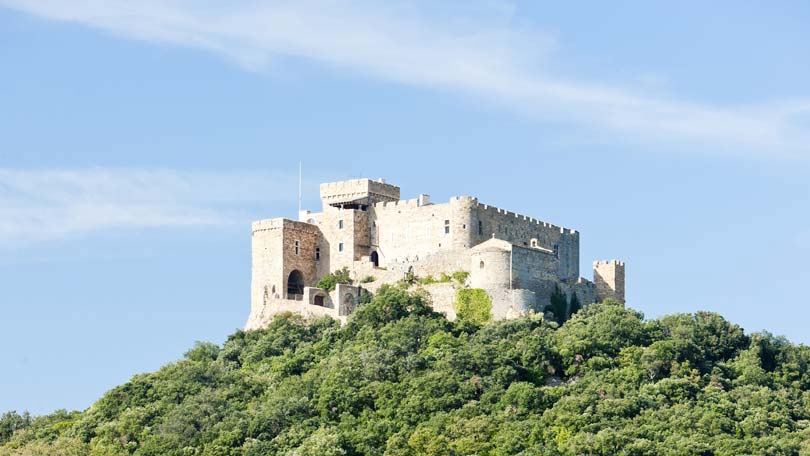
Wine grapes grow mostly between the 30th and 50th parallel, in both the Northern and Southern hemispheres—although it can grow in other, more unexpected places as well. Following is a tour of the world’s most famous wine regions—which are wonderful places to visit and have a glass.
France. Possibly one of the most famous wine countries in the world, France has been a stand-out wine-producer for centuries. When you visit, you’ll see a fairy-tale landscape of castles, churches and medieval towns set amidst rolling hills. Some of France’s most prominent wine regions include the Loire Valley, with its rich and fertile soil and its moderate climate—the area where 75% of France’s wines are produced. The area is known most for its white wines, including Sauvignon Blanc, but it also produces some delightfully fruity reds.
Italy. Italy is known for its robust reds, particularly its Chianti. In fact, the district of Chianti, located between Siena and Florence, is one of the country’s premier wine regions. With its beautiful castles and ruins, olive groves, and over 10,000 acres of vineyards, Chianti is a productive wine region and a fascinating place to visit. Winemakers there still stomp the grapes manually—with their feet!—and visitors to the area during the autumn season often get in on the action.
Northern California. With its fertile Napa and Sonoma Valleys and mild climate, California is one of the most prominent wine producers in the U.S. Visitors there often find a series of small, family owned vineyards—there are over 200 of them in the area—that produce an astonishing variety of consistently excellent wines. California’s wine country is known to cater to tourists, with plenty of charming towns and boutiques strung out among the acres of vineyards.
Germany. Most people don’t think of wine when they think of Germany—they think of beer. But Germany’s Baden region is a big player in the industry, known for the strong flavor and low acidity of its wines. It’s particularly noted for its Pinot Noir and Pinot Gris, and many of its vineyards are very welcoming to visitors—you’ll find that many have connecting restaurants, so you can enjoy some local fare with the new bottle you picked up at the vineyard.
Australia. Australian wine is often noted for its sweet dessert wines, but if that’s not exactly your favorite, don’t let it stop you from enjoying Australian wine. Eastern Australia produces deliciously spicy Shiraz, as well as Pinot Noir, Chardonnay and Sauvignon Blanc. Near Sidney, you’ll find a lot of Pinot Noir vineyards, and in the Yarra Valley you’ll find plenty of sparkling wines to choose from—some even produce unique kiwifruit and other wines made from local fruits, all of which are worth a try.
South Africa. The wine country just northeast of Cape Town is the seventh largest wine-producer in the world. South African wine producers work mainly with white grapes, often Chenin Blanc. The region’s vineyards are noted for producing their own varieties of grapes by crossing different established strains—for example, the rustic South African Pinotage is a cross between Pinot Noir and Cinsaut grapes. The most sought-after South African wines are grown on the coast, where the temperature is cooler and milder—encouraging the growth of grapes like Sauvignon Blanc, which prefer these climates.
Chile. Chile surprised the wine industry by going from producing mediocre wines to putting out an excellent product that stands up well to Californian, French, and other established winemakers—in about ten years. The Chilean Maipo Valley produces high-quality, affordable reds out of Cabernet Sauvignon, Pinot Noir, and Merlot grapes. The flavors found here range from fruity to full-bodied, and the world has responded well to Chilean exports—the Santa Rita vineyard alone ships around 340,000 bottles per year to consumers in the U.S.
Portugal. Portugal is known for its port—a sweet fortified wine that’s sometimes aged for centuries before a bottle is opened. Ports are aged either in casks or in bottles. The bottle-aged variety can take many years or even decades to reach maturity, but cask-aged ports lose flavor quickly and are usually not aged long before drinking. In Vila Nova de Gaia, over fifty port wineries welcome visitors for tours and samples. Here you’ll be drinking port instead of wine on your vineyard visits, and many wine aficionados savor the change.
No matter where you’re traveling, chances are you can work a vineyard tour and sampling in. But these eight regions produce some of the world’s best wine, and are an absolute must-see for any visitor with a taste for vino.
